Topocho's cake: A unique delicacy [ESP/ENGL]
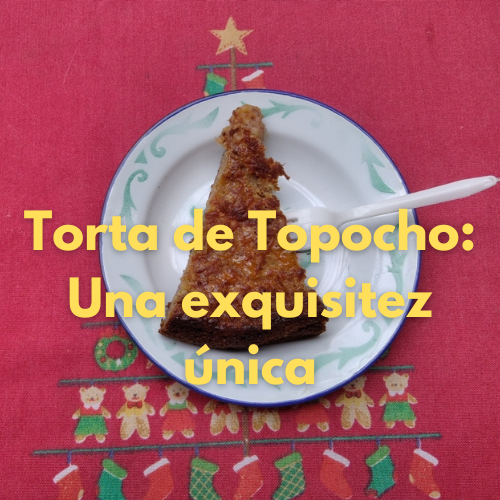
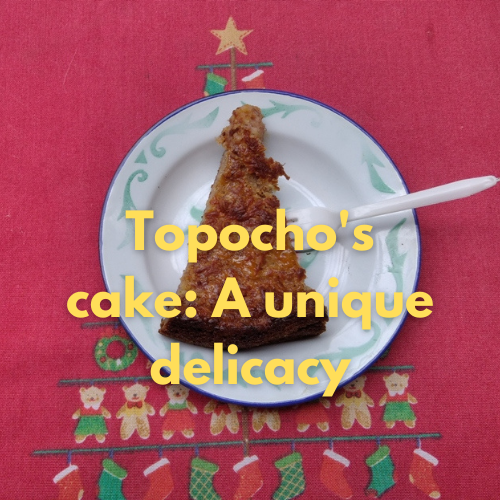
El topocho es una musácea, cuyo nombre científico es Musa paradisiaca L., perteneciente al grupo Musa ABB, y es una variedad muy adaptable y resistente al estrés hídrico, sin embargo es muy recomendable que tenga buen suministro de agua para asegurar una buena carga. No obstante, son susceptibles a plagas como los ácaros y fueron estos insectos precisamente los que parasitaron algunas de mis plantas, afectando negativamente su rendimiento, razón por la cual aunque una de las plantas fructificó, tuvo escasa producción. Generalmente las bellotas de los topochos alcanzan entre 7 y 9 manos o racimos individuales, pero en este caso la planta escasamente rindió tres manos, y parte de éstas fueron las que utilicé para hacer estas tortas de topocho, que sirvieron para comer en casa y para obsequiar. Cabe señalar que me divertí mucho cuando la gente que probaba el postre no atinaban a saber qué era lo que estaban comiendo, pues como ya dije, su sabor es muy muy complejo y puede ser engañoso. Aquí les muestro el fruto aún en la planta, luego cuando fue cosechado y su proceso de maduración. Cabe señalar que el período que transcurre desde que emerge la bellota hasta que se encuentra apta para cosecha, oscila entre 3 ½ y 4 meses.
The topocho is a musacea whose scientific name is Musa paradisiaca L., belonging to the Musa ABB group, and it is a highly adaptable variety resistant to water stress, however it is highly recommended that it has a good water supply to ensure a good load . However, they are susceptible to pests such as mites and it was precisely these insects that parasitized some of my plants, negatively affecting their performance, which is why even though one of the plants did bear fruit, it had little production. Generally the acorns of the topochos reach between 7 and 9 hands or individual clusters, but in this case the plant barely yielded three hands, and part of these were those that I used to make these topocho cakes, which were used to eat at home and for give away. It should be noted that I had a lot of fun when the people who tried the dessert did not know what they were eating, because as I said, its taste is very complex and can be misleading. Here I show you the fruit still on the plant, then when it was harvested and its ripening process. It should be noted that the period that elapses from when the acorn emerges until it is ready for harvest, ranges between 3 ½ and 4 months.
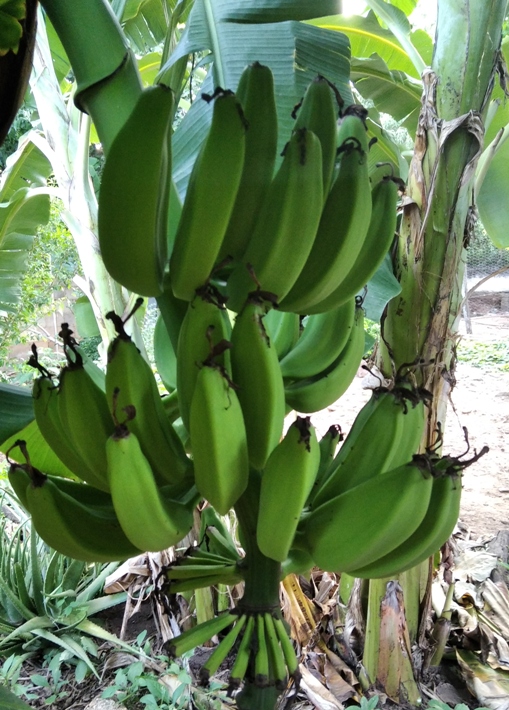
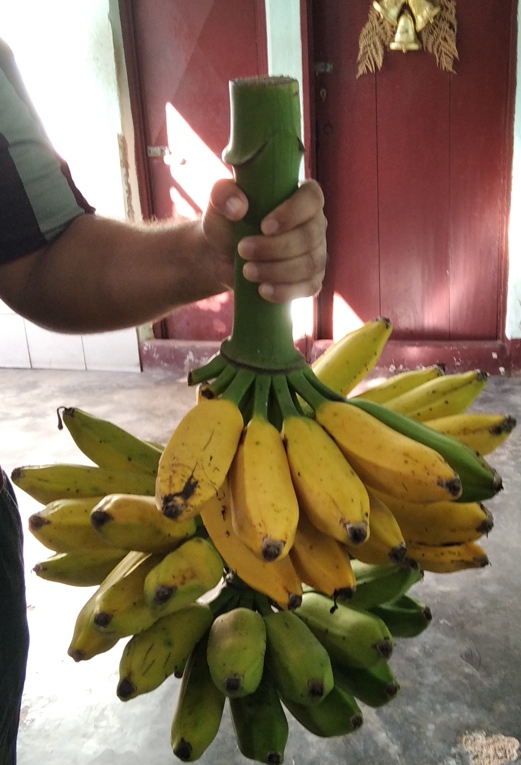
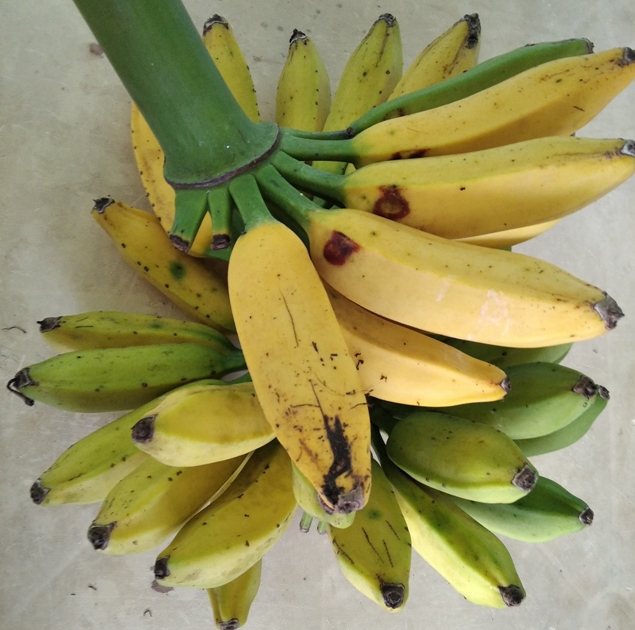

2.5 kg de topochos muy pero que muy maduros, casi rozando con la descomposición; ya triturados y sin su cáscara. Si no consiguen topochos, pueden utilizar cualquier otra variedad de cambures o plátanos, siempre y cuando estén realmente maduros, como dije, casi descompuestos. Aunque suene increíble, este proceso de fermentación permite que los sabores se expresen plenamente, es precisamente esto lo que le aporta complejidad al postre.
600 ml de leche, si es fresca, recién ordeñada, aún mejor; sino, pueden emplear la que viene en polvo o pasteurizada. Pueden conocer el proceso de esterilización y extracción de materia grasa de la leche de ordeño en esta publicación aquí.
300 gr de azúcar blanca.
330 gr de queso blanco duro, rallado, (de estos apartar 100 gr para colocarlos en los topes de las tortas).
350 gr de harina de trigo con leudante, cernida, (reservar 50 gr para enharinar los moldes).
1 cucharadita de vainilla. Si tienen canela en polvo, pueden añadirle 1 cucharadita (además de la vainilla). En este caso no le adicioné porque yo no tenía disponible, pero la canela en polvo aporta un sabor muy recomendable ya que combina maravillosamente con la preparación.
2 huevos.
1 cucharadita de bicarbonato.
½ cucharadita de sal.
Mantequilla, margarina o aceite para engrasar los moldes.
Moldes para hornear (de su preferencia), un triturador de papas manual o un tenedor fuerte, una cuchara o paleta para mezclar, un bol lo suficientemente grande para hacer la mezcla. Tomen en consideración la cantidad y medidas de los moldes que yo utilicé para esta receta, o sea, rinde bastante la mezcla.
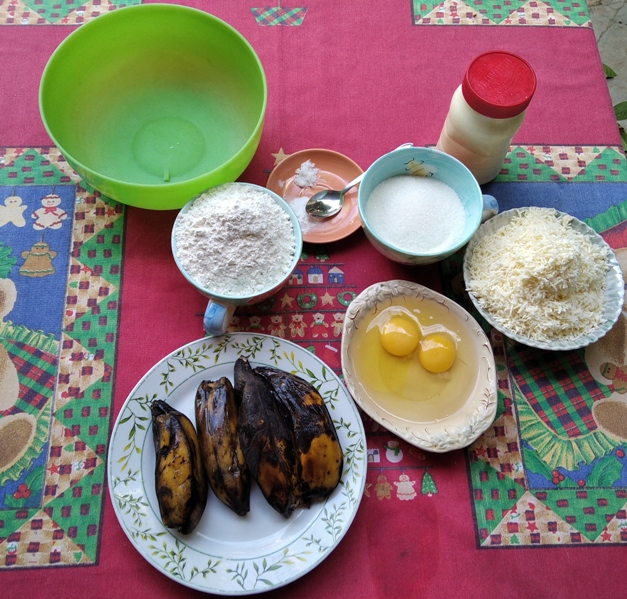
2.5 kg of very, very mature topochos, almost bordering on decomposition; already crushed and without its shell. If they can't find topochos, you can use any other variety of bananas, as long as they are really ripe, as I said, almost decomposed. Although it sounds incredible, this fermentation process allows the flavors to be fully expressed, it is precisely this that adds complexity to the dessert.
600 ml of milk, if it is fresh, just milked, even better; otherwise, they can use the one that comes in powder or pasteurized form. You can learn about the process of sterilization and extraction of fat from milking milk in this publication here.
300 gr of white sugar.
330 gr of hard white cheese, grated, (of these set aside 100 gr to place on the tops of the cakes).
350 gr of self-rising wheat flour, sifted, (reserve 50 gr to flour the molds).
2 eggs.
1 teaspoon of baking soda.
½ teaspoon of salt.
Butter, margarine or oil to grease the molds.
Baking pans (your preference), a manual potato masher or strong fork, a mixing spoon or paddle, a bowl large enough to mix. Take into consideration the quantity and measurements of the molds that I used for this recipe, that is, the mixture yields a lot.
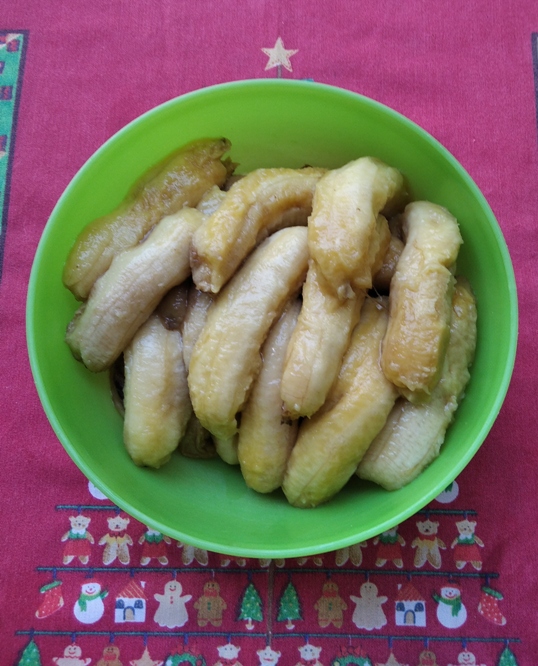

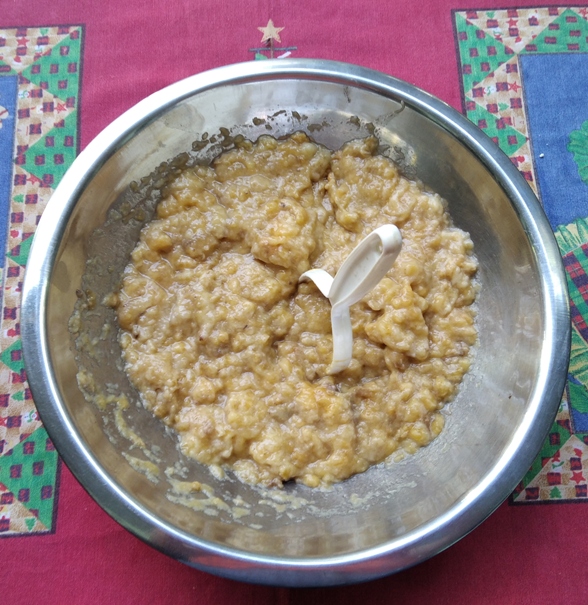

Later, I progressively add the rest of the ingredients to the crushed topochos; and it is necessary each time something is incorporated, stir well to homogenize it. The order is as follows: Eggs, milk (you can dilute the vanilla there, although as you can see, I did not do it), sugar (the photos were horrible, that's why they are not there), salt and bicarbonate, flour (little by little, reserving the 50 grams that I previously indicated), the grated white cheese, (slowly, distributing it well in the mixture and reserving the 100 grams that I also indicated). Stir until smooth.
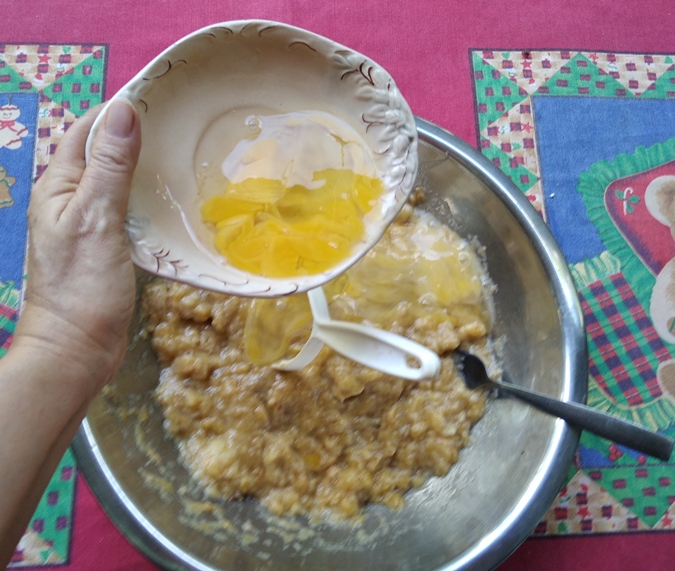
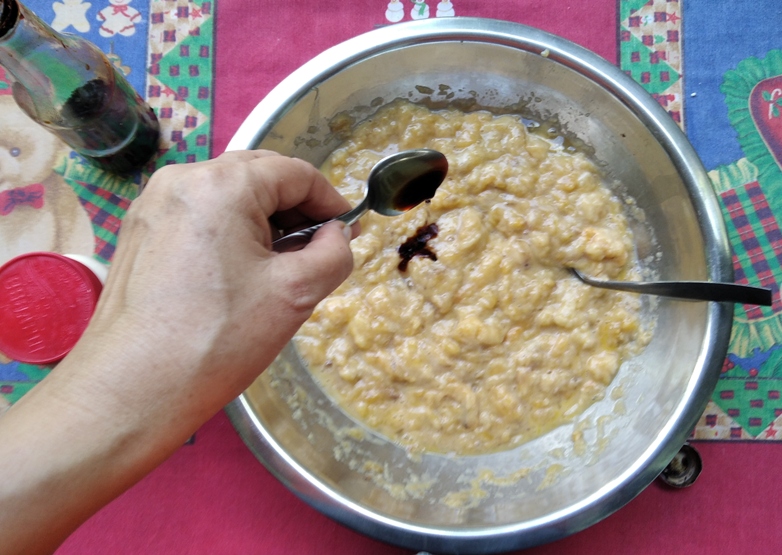
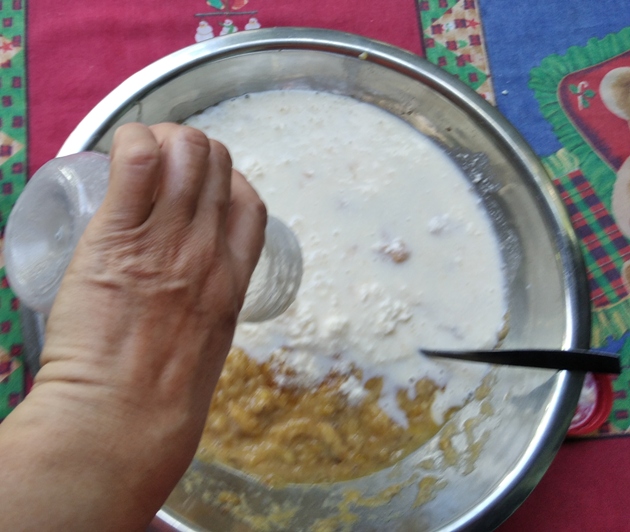
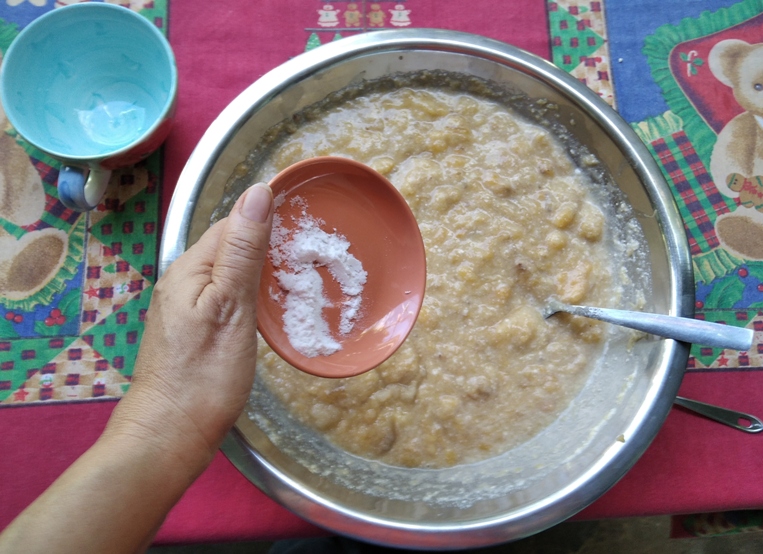
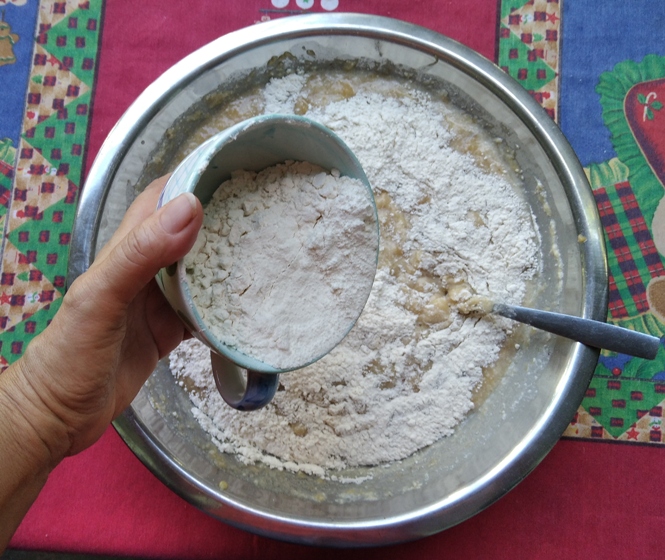
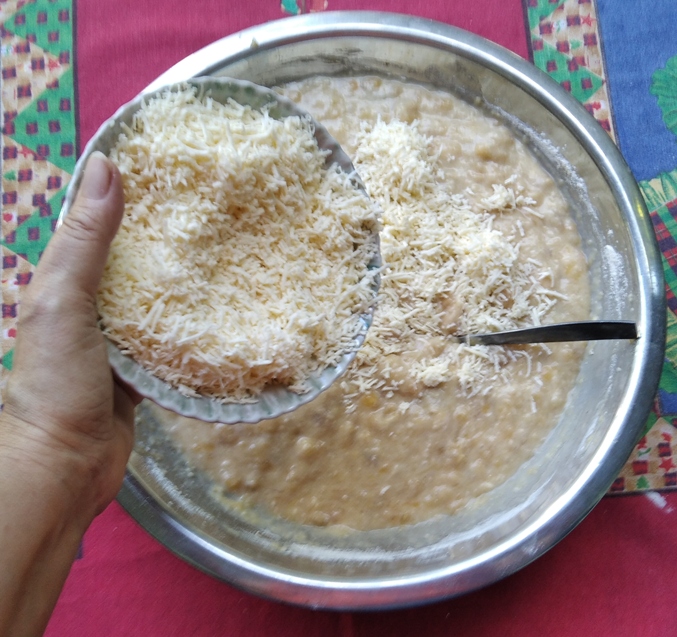

I serve the mixture in the molds previously buttered (or oiled) and floured, I try not to fill them to the brim so that the content does not spill. I sprinkle the remaining cheese on the surface of each cake, so that they are gratin in the oven, and I proceed to bake for 60-70 minutes at 180 ºC. Once cooked, it is necessary to wait for them to cool to unmold them. This cake is convenient to keep cold in the fridge, and I, in particular, like to eat it the next day, when its flavors have settled. The explosion of flavors in the mouth is incredible, you will not believe it, because as I said, sometimes it tastes like coconut, nuts, bread pudding, and also, obviously, topocho. Enjoy your meal!
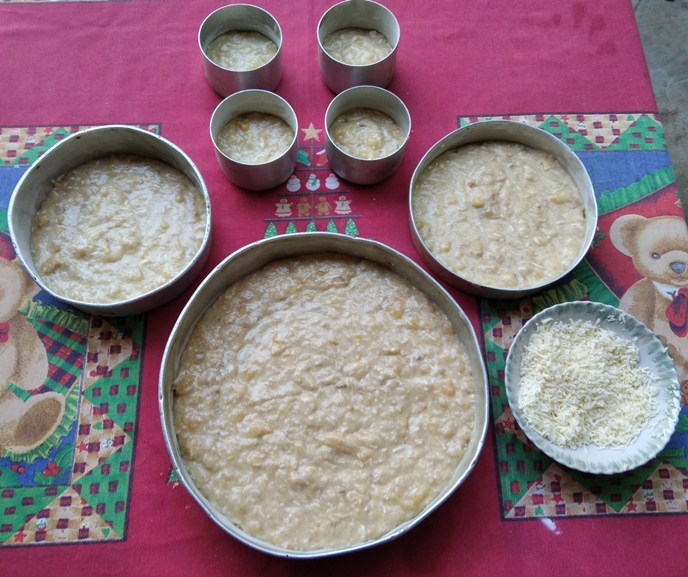
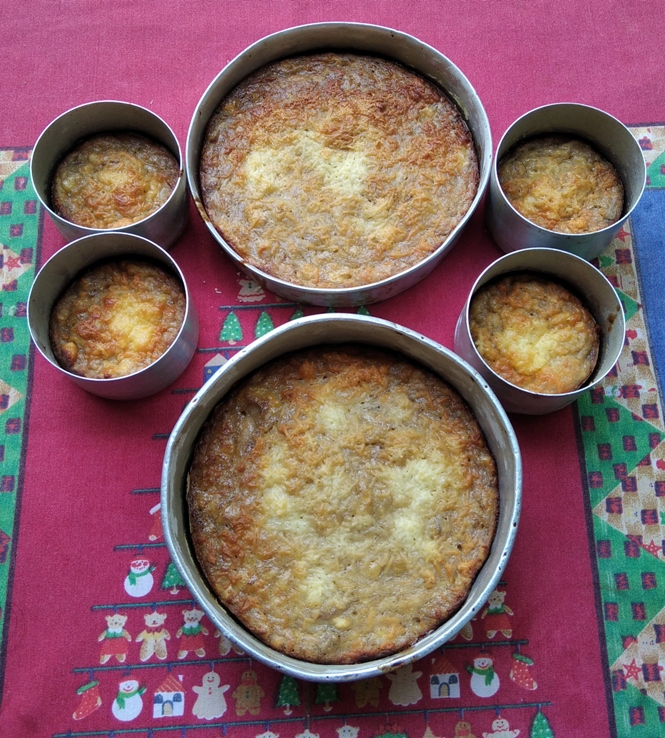
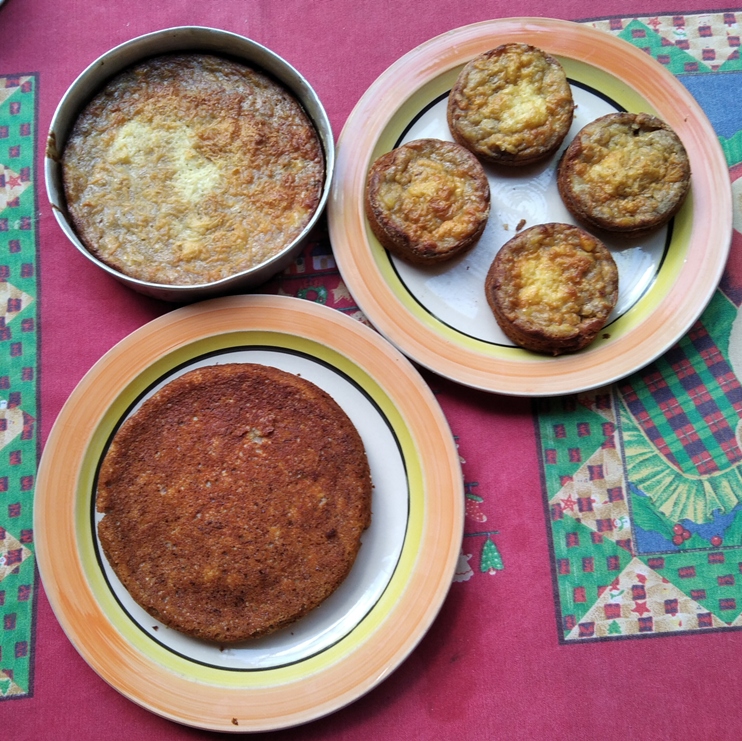
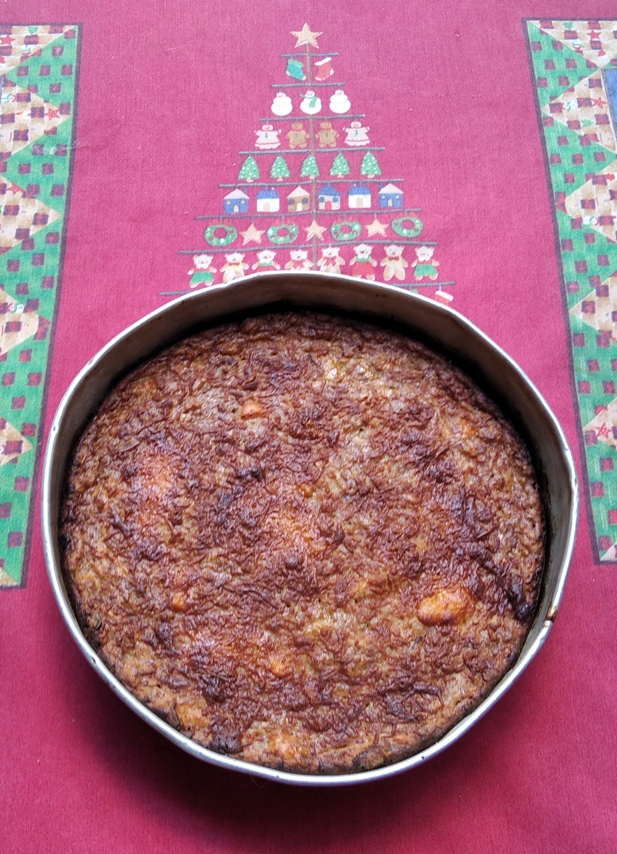
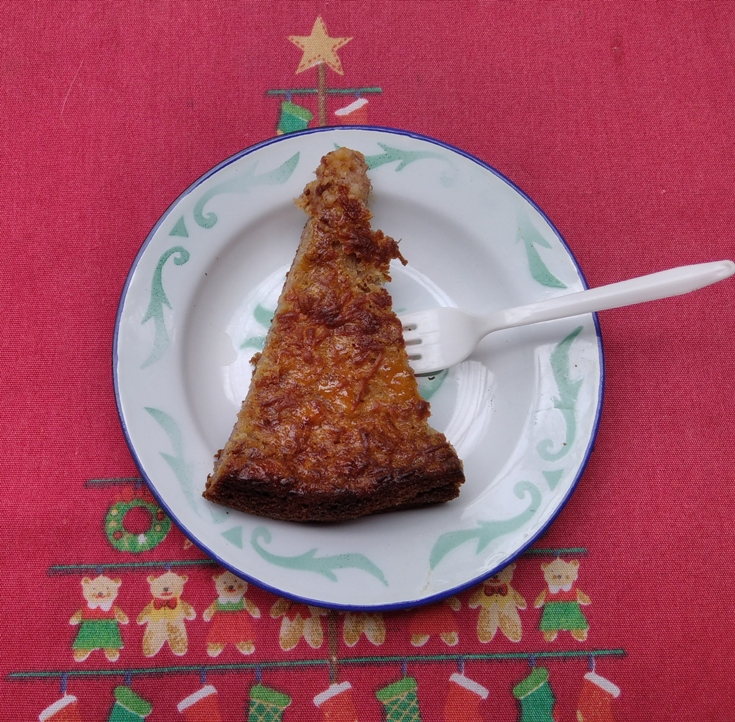

Here I end today's publication, I hope it has been pleasant for all of you. A big hug.

Estas fotos son de mi autoría y fueron tomada con un teléfono Xiomi REDMI 8 A / These photos are my own and were taken with a Xiomi REDMI 8 A phone .
Los separadores utilizados, son cortesía de @eve66 quien comparte hermosos diseños que embellecen el maquetado de nuestros post. / The dividers used are courtesy of @eve66 who shares beautiful designs that embellish the layout of our post.
El diseño de portada incluido en esta publicación, han sido elaborado por mi persona con la aplicación CANVA / The cover design included in this publication has been made by me with the CANVA application.
En caso de que se requiera emplear el contenido o imágenes de este post y de mis otras publicaciones, agradecería se hiciera referencia a mi autoría (Fabiola Martínez) y se citara el link correspondiente. Gracias. / In the event that it is required to use the content or images of this post and my other publications, I would be grateful if my authorship (Fabiola Martínez) was made and the corresponding link was cited. Thank you.

 CommunityIIDiscord
CommunityIIDiscord
https://twitter.com/sirenahippie1/status/1350862764718354432
https://twitter.com/sirenahippie1/status/1350862764718354432?s=20
¡Felicidades! Esta publicación obtuvo upvote y fue compartido por @la-colmena, un proyecto de Curación Manual para la comunidad hispana de Hive que cuenta con el respaldo de @curie.
Si te gusta el trabajo que hacemos, te invitamos a darle tu voto a este comentario y a votar como testigo por Curie.
Si quieres saber más sobre nuestro proyecto, acompáñanos en Discord: La Colmena.
¡Me siento contenta! ¡Qué excelente!, todo un honor haber sido seleccionada para la curación. Un gran saludo.
Amiga me tienes sorprendida con tu variedad de recetas nunca había escuchado de esta torta de ve deliciosa, yo quiero.
Jajajaja, @actioncats que gato tan divertido. Esa torta es buenísima y si no consigues topochos, la puedes hacer con cambures o plátanos, de esos que están bien feítos, casi que para dárselos a los morrocoyes. Es muy muy buena, intenta y verás. Un gran abrazo, amiga mía.
Oyee, amiga nunca habia escuchado sobre esa torta. para mi es una tremenda idea teniendo en cuenta que sembre 2 matas de topochos. cuando coseche ya se que intentar.
Has sembrado un tesoro. El topocho es una musácea resistente y rendidora, mientras que las de cambur tardan unos 15 meses en fructificar, el topocho en aproximadamente 8 meses ya está dando su primera bellota. Recuerda dejar unas cuatro plantas en cada macoya, para que no tengan problemas de competitividad, las otras las puedes ir sacando y resembrando. Es un receta excelente, y los frutos debes estar casi que descompuestos para poder hacerla bien. Fíjate que en la foto sólo mostré cuatro topochos, pero eran los más decentes, los otros estaban más feos y a la gente le hubiese parecido chocante verlos. Ojalá y luego fotografíes y pobliques tus plantas, yo no me canso de hacerlo. Ah, por cierto, cuando den bellota, deja que la parte de abajo se mantenga, así no dé frutos, esta sirve para que los colibríes, algunas abejitas como los pegones coman (los pegones son abejas meliponas y por ende, polinizadores), también comen unas avispitas que no tienen aguijón, pero igual polinizan el resto de las plantas. Un gran saludo y gracias por pasar por aquí.
Hola buenos días, se ve muy sabrosa, parecida a la torta de pan. A mi me fascina el plátano en cualquiera de su presentación, pero el topocho solo lo he comido en la sopa, que le da un buen gusto. Voy tomar tu receta. Gracias y saludos
Hola amiga @margamo, que bueno verte por aquí. Sí, esta receta es bien chévere y rendidora y la puedes hacer con cambur y plátano también, pero que estén casi descompuestos. Como dije en la publicación, esto le aporta profundidad y complejidad a los sabores, supongo que ocurre algo similar que con el cacao, además de que reduces la cantidad de azúcar. El topocho es delicioso cuando está pintón y lo haces en tajadas, toda una exquisitez. Un gran saludo.
Nunca habia visto esta receta, se ve muy buena, a mi particularmente el topocho me gusta en toston o dulce, pero en torta no se me habria ocurrido, gracias por compartir la receta.
El topocho es una exquisitez en tajadas, especialmente cuando está pintón. Lo fríes y le pones un toquecito de sal ya estando fuera del sartén, y es algo alucinante, esta receta también lo es. Gracias por pasar a leer y comentar. Saludos.
Yum! You have been curated @taco.cat on behalf of FoodiesUnite.net on #Hive. Thanks for using the #foodie tag. We are a tribe for the Foodie community with a unique approach to content and community and we are here on #Hive.
Join the foodie fun! We've given you a FOODIE boost. Come check it out at @foodiesunite for the latest community updates. Spread your gastronomic delights on and claim your tokens.
Join and Post through the Community and you can earn a FOODIE reward.
This is an honor, thank you for taking my post into account. I love it!
Esto es un honor, gracias por tomar en cuenta mi post. ¡Me encanta!
Congratulations @sirenahippie! You have completed the following achievement on the Hive blockchain and have been rewarded with new badge(s) :
You can view your badges on your board and compare yourself to others in the Ranking
If you no longer want to receive notifications, reply to this comment with the word
STOPPero que divinura ésta receta!! Lo que más me sorprende es que lleva queso y yo soy fiel amante del queso hahaha. ♥ Me encantó.
¡Holaaa @danielapevs! ¡Que chévere que pasaste a visitarme!, sí, esta receta lleva queso y también leche. Si te gusta mucho el queso, puedes incrementarle la cantidad, así tendrá más marcado el gusto. Como dije, la pueden hacer con otras musáceas, ya sea cambur o plátano, pero que estén súper maduras, ya verás lo sorprendente del sabor. Un gran abrazo.
Hola @sirenahippie , se ve deliciosa , disculpa por mirar el gif que te colocaron ja,ja,ja, está ansioso de que le sirvas ja,ja,ja .
Un abrazo con mucho respeto
Jajajaja @lupega tranquilo, ese gato es muy goloso, jajaja. Sí, se ve y es realmente deliciosa. Como dije, la gente que la prueba, a menos que le digas de qué es, o que le toque un pedazo de topocho entero, no se enteran, y empiezan a adivinar, que si es de coco, que si es de frutos secos, que si es de pan, y así van. El sabor es bien complejo. Gracias por pasar por aquí, un gran abrazo.